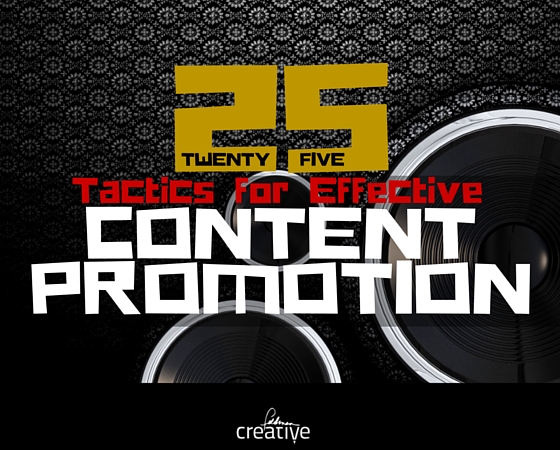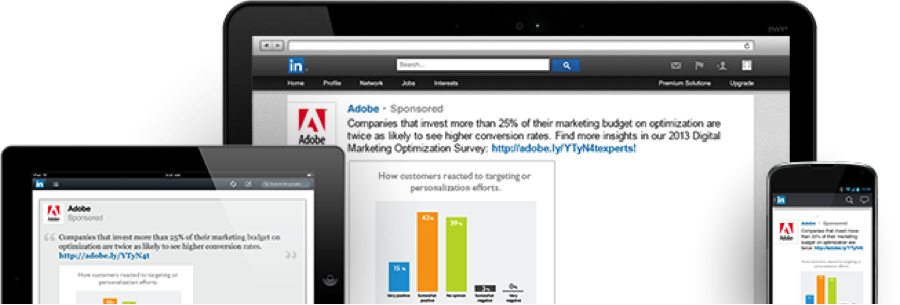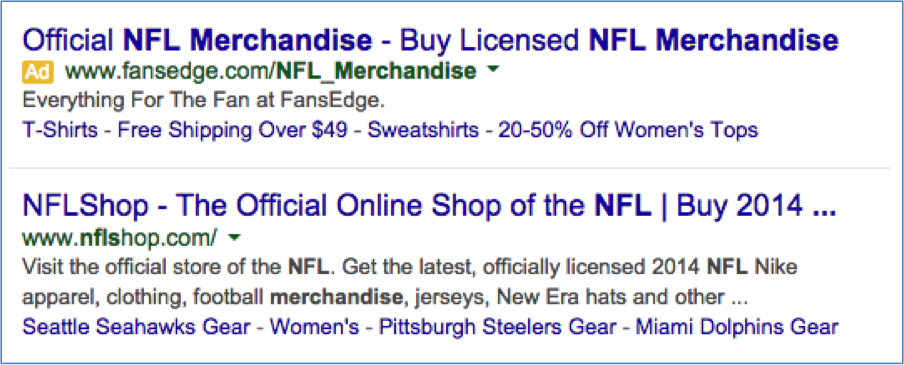Content reach… Grr. Ugh. Sh*t.
It’s become a bit of a problem, hasn’t it?
Your recent masterpiece is the most helpful content you’ve ever published. You know it. But no one else does. Why? It’s found no audience—or no audience has found it.
This is the dirge of millions of content marketers around the world (sung to the tune of Sgt. Pepper’s Lonely Blog Post Band).
What gives?
You absolutely poured yourself into the content planning process. You did deep audience research and your content marketing strategy is locked and loaded. The most talented creative team tackled the assignment. Still, it’s drowning in a sea of content noise.
Content marketers, especially those joining the content party in the 2000-and-teens years, are learning how hard it is to find an audience.
Content reach calls for a content promotion plan
Most marketers post content on their blog then dispatch a few updates via their social media networks. If this strategy isn’t working for you (it works for very few), you need to do more.
Of course, you’ll have a unique set of objectives and how they map to your marketing process will also be unique. So, like everything in digital media, you’ll experiment with different tactics, measure, and refine.
To begin with, it’ll be helpful to understand the nuances of paid, earned and owned media and consider investing time, energy, and possibly, money, into all three.
We’ll take a look at each and dig into a heap of tactics that might serve your content promotion plan.
Forrester Research created a matrix, which defines three media models, lists examples and explains the role, benefits and challenges of each.
 Paid media: money still talks
Paid media: money still talks
As content marketing’s grown from hot to sizzling, it’s common to find the authorities proclaiming advertising has died. They’ll often say, “big brains beat big budgets.” And while they likely can offer examples to support the claim, you won’t have to search hard to find companies who simply can’t increase traffic and leads to their satisfaction strictly with organic tactics.
Paid media can deliver eyeballs instantly and scale to help achieve your objectives. Not only has paid media not died, it’s proliferated. An enormous number of options are available to help you expand your reach and elevate engagement with your brand.
Outbrain
Outbrain describes its service as the leading content discovery platform on the web. The company’s “Amplify” service distributes your content on the websites of 300+ premium publishers. You pay per click.
Outbrain offers in-stream, interstitial and pop-up options (as shown in this example) for desktop and mobile.
Taboola
Taboola’s service is very similar to Outbrain. Taboola claims its service makes 40B recommendations monthly to earn 400M unique users monthly with “Content You May Like” (their tagline).
Adblade
Another player in the paid article distribution space, Adblade reaches over 300M unique users in the US each month.
Facebook boosted posts
“Pay to play” is a phrase that surfaces in conversations about Facebook Pages today. Provided your page has reached 50 likes, for as little as $5, you can boost your posts.
Facebook boosted posts, which are labeled “Sponsored,” present you with a great many options for reaching people who like your page, their friends or new audiences. You can boost posts from your news feed, timeline or page including status updates, photos, videos and offers.
I invested a few dollars to announce the availability of my strategic workbook, “The Planner.” Facebook shows me 2,412 were reached (whereas my organic posts generally reach less than 100.)
Promoted tweets
Promoted tweets give you wider distribution. You can target non-followers using many variables to dictate where your tweets appear. You pay only when a user engages with your promoted tweet.
OutMarket’s promoted tweet appeared atop my Twitter timeline.
LinkedIn sponsored updates
LinkedIn’s sponsored updates program is an available option if you’ve created a LinkedIn company page. You’re able to target followers, non-followers or everyone, as well as target via geography, industry, company size, job title and more.
A new program, “direct sponsored content,” enables you to run in feeds without publishing on your page. Advanced tools allow you to personalize and test variations of your content.
Sponsored updates by Adobe are showcased on the LinkedIn marketing solutions page where how-to videos explain the ad program.
YouTube ads
YouTube calls ‘em what they are: ads. You pay when your ad is watched. Your video ads are powered by Google AdWords, so you’ll need an account. YouTube offers a robust microsite designed to help you understand the program, how companies use it, and how to get started. Naturally, much of the tutorial content is video.
StumbleUpon paid discovery
Over 35 million people use StumbleUpon to discover content. StumbleUpon’s paid discovery program puts your URL into users’ streams, directing traffic directly to the page you choose. You need not create an ad or update of any sort.
reddit ads
Familiar with reddit? It’s visually crude and hard to understand, so it’s not for everybody. However, 6-billion pages were viewed on the site last month. You can promote your content on reddit with promoted posts to target any of reddit’s many communities.
Google AdWords
Google’s well-established pay-per-click program is the granddad of online advertising. If you’re new to AdWords, you’ll find it’s simple to get started. However, to truly benefit from the program, you’ll need to learn more about how it works or work with a specialist (Google offers free assistance by phone).
AdWords (pay-per-click) appear in the same stream as organic results, but are subtly marked by a small, yellow “Ad.” The ads may appear atop the page, in a sidebar, or both. Like all things Google, the program changes often (and users may or may not be updated).
Read: The Beginner’s Guide to Understanding AdWords PPC
Retargeting
Generally, about 2% of website visitors convert. Retargeting is a way to try to bring the 98% who chose not to buy back to your website.
Retargeting (or remarketing) tracks your visitors through the use of cookies (data stored in your browser). As they browse the web, retargeting providers present your ads to people who visited your site. You pay per click.
Retargeting’s effectiveness traces to its ability to re-engage ready-to-buy window shoppers. Because viewers are already familiar with your brand, they’re more prone to respond to the ads. Like PPC, the subject of retargeting ads is often products, but its application for content promotion continues to grow.
 Earned media is the most trusted promotion you can get
Earned media is the most trusted promotion you can get
“Earned media,” a term that’s been around awhile thanks to the world of public relations, essentially means getting free media for your brand. While it may have formerly focused on traditional media, its implications in the digital world are wide and varied. Earned media may include other companies’ blogs and social media.
Prominent listings on search engines are probably the pinnacle of earned media.
However, anywhere the talk is about you—preferably how great thou art—can be considered earned media.
Your success with earning media is bound to the quality of your content. You have to be worthy of the coverage. Let’s explore some of the effective ways to earn media.
Guest blog
Contributing blog posts to other web properties is a highly effective tactic and has been a favorite of mine for years. Though your content may be edited by the blog’s editor (some do, some don’t), you obviously have far more control over the published content than you might with other earned media strategies.
If you’re new to guest blogging, you’ll increase your chance of earning the opportunity by seeking blogs that promote the fact they publish contributions from outside writers. Perform a search for such sites by entering terms such as “write for us” or “contribute to our blog” (plus the niche you do business in).
I recommend creating a list of potential sites to write for, ranked by traffic (use Alexa.com to determine it). At first, you may want to have a humble plan by submitting to sites you believe will consider you. Over time, with some success to speak of, you’re likely to earn bigger and better opportunities at some of the more prominent sites in your niche.
Want to learn how Andy Crestodina and I have succeeded in increasing our content reach? Listen to our podcast: Amplify Your Audience by Guest Blogging.
Read: The Benefits of Guest Blogging (from a Veteran Guest Blogger)
Syndicate your content
Because so many blogs and sites are hungry for content to publish, if you can offer a steady stream of quality content, you may be able to score one or more syndication arrangements.
Having your articles syndicated may be as beneficial as guest posting, however it may be an easier strategy because you won’t need to produce exclusive or “first run” posts.
For both guest blogging and syndication, you’ll create backlinks to your onsite content where relevant and appropriate. Also, in most cases, the sites will allow you to write your own author bio including links to your site, social media profiles and possibly, additional content such as eBooks.
Get curated
Some websites, or web services (Scoop.it and Paper.li come to mind) are all about curation, meaning their mission in life is to find good stuff to publish. You might say the users of these services “steal” your stuff, but it’s mutually beneficial. What they really do is republish your stuff. It may be difficult to arrange such relationships, but if you publish quality content, they tend to happen organically.
Read: Does a Content Hub Make Sense for Your Brand?
Make news
I’m talking PR here. The goal: get respected media to cover you. The reward: big reach (and hopefully credibility).
“News coverage garners attention, fuels social amplification, builds brand credibility and as it so happens, influences buyers,” writes Sarah Skerik on the PR Newswire site (author of “Driving Content Discovery”)
I’d rather not endorse or even attempt to explain the fast-changing online PR business, but in an effort to point you in the right direction, oft-cited leaders include Vocus/Cision (recently merged) and Meltwater. Their job is to help you execute digital PR programs.
Influencer marketing is the practice of getting leaders in your field or even celebrities to vouch for your brand and its content. I’ve detailed a lengthy list of suggested actions here and rounded up suggestions from 22 marketing leaders in this infographic.
Get comments
When you’re actively pursuing the strategies I’ve suggested, your content may become cited in comment streams on blogs and online forums, which helps to earn a larger digital footprint, and often, links to your content.
Building a social media following is key to earning media mentions. The goal is to earn fans and advocates. Because social media relationships are often largely reciprocal, you’ll likely earn more mentions and shares when you actively do the same for others.
Read: Social Shares: How to Inspire Readers to Respond
Master search
No single paragraph can give search marketing the reverence due, however, you must understand the infinite power of building your presence on search engines. Search engines award you rankings based on the quality of your content and the links your online assets earn. Make it a priority to understand how SEO works and earn your place as a destination for respected content.
Word of mouth, that is, recommendations you earn from others, is and always will be the most trusted form of “advertising.” Become a content marketer that earns it and you’ll catapult your traffic, leads and sales.
 Owned media is where you start conversations
Owned media is where you start conversations
I consider “owned media” a bit slippery to define. Forrester calls it “a channel you control,” but the truth is, the degree of control you have varies across media.
You own your website and blog (assuming you host your blog). While some may suggest your email marketing has a degree of “earned” to it because you have to earn an opt-in, I’d qualify it as one you do indeed own.
But then there’s the media—social media—where you go for a ride and though you attempt to steer, often you surrender control to either the host network, or the audience, or both. Facebook, for example, gives you plenty of control, but dictates the rules and changes them frequently.
In my mind, “owned media” is best thought of as the channels where you either start or arbitrate the conversation. Forrester explains, “owned media creates brand portability.” On it, you extend your presence in places across the web beyond your site.
Certainly, companies that interact with customers and influencers via owned media gain a significant advantage over those that don’t, so we’ll look at how it’s done.
Email is the top content promotion tactic of many marketers, myself included. As I write in my Email Marketing eBook, email is the most pervasive medium in business. Nobody blows it off.
This is not to say email is without challenges. To succeed, you need to build a significant email database, master the tools to manage email in volume and get recipients to open, read and click through. Also, though we’ll define it as “owned media,” you generally pay for email services.
As you develop your email chops, consider some of the many forms of potentially effective email opportunities beyond the newsletter, including triggered emails, autoresponder series, and transactional email.
Social
Social media and content marketing are mates. But you know that. So rather than wade through somewhat obvious recommendations, I’ll offer a few that may be considered the domain of advanced social media marketers.
- Extract highlights from your content in the most media-specific way possible and include images to increase stopping power
- Always include a call-to-action in your updates
- Take advantage of Twitter cards, which attach media to tweets that link to your content (setup required)
 A Twitter card features a “View summary” link, which then invokes and expanded tweet such as this.
A Twitter card features a “View summary” link, which then invokes and expanded tweet such as this.
- Share—and discuss—your content on the most active and relevant LinkedIn Groups
- Use the +(Name) tactic on Google+ to ensure your posts are seen by influencers (to also increase the chances of earning additional shares)
- Pin images on Pinterest that link to your onsite content, with rich descriptions
- Similarly, tag your peers on Facebook and the various networks that use tagging systems
- Use #hashtags to increase discoverability
- Setup and maintain both personal and company profiles and pages
- Ask readers to share
- Quote experts
Read: What Social Media Tactics Are Most Effective?
Blog
Cover more bases by making sure your blog encourages sharing and engagement.
- Integrate your blog with a social style comments section such as Disqus, Livefyre or even Facebook comments
- Add social sharing buttons (I recommend the types that remain onscreen as the reader scrolls)
- Use great images that are worthy of sharing on Pinterest (or anywhere)
- Create prepopulated tweets with clicktotweet
Free content platforms
Take advantage of the massive popularity of:
YouTube
- Claim a branded YouTube channel and publish video, podcasts, and webinars regularly.
- Remember to cross-promote content on your website and blog.
- Include your website URL in the video description.
- Create informative and entertaining slide presentation versions of your content on the massively popular network.
- Publish PDFs and infographics too.
- Use Adobe Acrobat to embed links.
- Create a great cover where the title is easily read when presented as a thumbnail.
Read: Slideshare – A Content Marketing Imperative
Foster employee advocacy
Employees may be the most overlooked content promotion strategy.
Your employees are your ultimate content promoters, especially if they work directly with customers. Getting them to help with word-of-mouth branding out of genuine interest says much to your audience.
Getting your entire team involved in content production will give them a feeling of ownership, which in turn, incites more sharing. Ask employees to contribute ideas for their ideas and have them help create the content.
Integrate, experiment and refine
As you ramp-up and amp-up your content promotion and distribution, don’t lose sight of the need to integrate your efforts. Paid, earned and owned approaches complement each other. You’re likely to extend your reach even more when you use the strategies in combination.
Keep in mind, each and every media placement should point back to your website and/or blog in order to capture traffic, leads and conversions. You’ll want to publish content to your central platform first, then direct paid and earned efforts back to your owned properties to drive engagement.
Be open to perpetual experimentation. As you scale your content promotions, track your performance taking into consideration not only costs and traffic measures, but how your efforts impact the achievement of specific goals.
No formula is perfect. The ideal way to amplify content and turn up demand is to try a variety of strategies and refine where your money and time is spent based on the results.
Would you like to have this post as a free eBook? Here you go.
Links to all the web properties and services mentioned in this post are included in the eBook. The eBook was co-created by my friends at CoSchedule.
CLICK > Amplify Content, Turn Up Demand















Comments
Don Platon
You’re setting the bar quite high, Barry! Been following you for a while. Your content rocks.
Barry Feldman
Thanks so much for saying that Don.
Zach Strange
I loved every bit of this article. Thank you for sharing it. I’ve been blogging for about 4 months now and have really started to love it. However, I would love to find a way to monetize the blog and this article is perfect for it. Thanks again.
Mithow
Hi Berry,
Great article man.